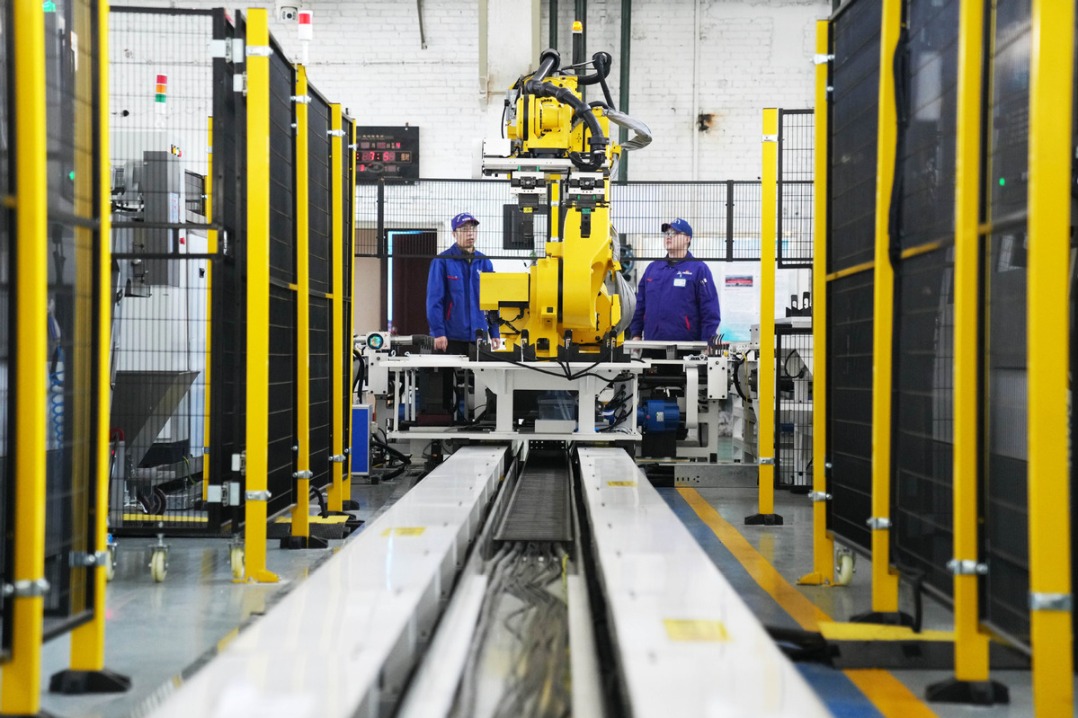Jing-Jin-Ji region stronger after a decade of coordinated development

BEIJING, Feb. 26 -- The Central Green Forest Park is a popular site in Beijing, with its lush vegetation and relaxing atmosphere, but aerial photographer Ma Wenxiao still remembers the place being black with chemical plants and chimneys when he first flew here 20 years ago.
After shutting down the factory, the city planted trees and flowers, and created beautiful landscapes in the area. In 2020, the factory-turned-park opened to the public. At the end of last year, three cultural buildings -- a theater, a library and a museum -- opened their doors in the park, attracting flocks of visitors.
The transformation of a park such as this says a lot about the changes in the city in which it is located.
In early 2014, China initiated a key strategy to coordinate the development of Beijing, Tianjin and Hebei -- a regional city cluster called "Jing-Jin-Ji." A prominent task of the strategy has been to move non-capital functions out of Beijing to treat the various "urban ills" in the Chinese capital, such as traffic jams and pollution.
Over the past 10 years, Beijing has accomplished some stunning improvements: phasing out about 3,200 manufacturing and polluting enterprises; resettling or upgrading nearly 1,000 markets and logistics centers; meeting the target of a 15-percent reduction of permanent residents in six urban districts; and increasing the proportion of newly established business entities in high-tech industries from 40.7 to 66.1 percent.
The Dahongmen and Beijing Zoo wholesale garment markets were once famed not only for their cheap prices, but also for their noisy and messy environments. These days, vendors in the two markets have been relocated to Hebei and Tianjin, and the two sites have been transformed into high-tech industrial parks.
The Jing-Jin-Ji coordinated development strategy also aims to bridge the development gap between Beijing, Tianjin and Hebei.
Over the past 10 years, enterprises in Beijing's Zhongguancun area, known as "China's Silicon Valley," have established more than 10,000 branches in Tianjin and Hebei. Enterprises in the two regions have received 2.3 trillion yuan (319.5 billion U.S. dollars) in investments from Beijing.
SMC Investment Management China Co., Ltd., a subsidiary of Japan's pneumatic component manufacturer SMC Corporation, is a beneficiary of the region's coordinated development.
Three decades ago, the company chose to settle in the Beijing Economic-Technological Development Area, bullish about China's enormous market potential. In 2018, SMC established a subcompany in Tianjin to aid its expansion layout.
Three years after the Tianjin plant began operation, the company's local output value has already exceeded 1 billion yuan. SMC has even established a market team tailored to the Beijing-Tianjin-Hebei region and is considering investing a further 500 million yuan to build an innovation center in Beijing serving the whole Asia-Pacific region.
To enhance the coordinated environment, efforts have also been made to upgrade the infrastructure and environment in the Jing-Jin-Ji region.
Over the past 10 years, a number of railways have been opened for operation, and the overall length of high-speed railway lines in the region reached 2,576 km. The three places have also made joint efforts on environmental control. In 2023, the average annual concentration of fine particles in the air in Beijing, Tianjin and Hebei decreased by 57.3 percent compared with 2014.
Zhang Gui, a professor with Nankai University in Tianjin, said, "The three places took the lead and made experiments in terms of institutional innovation, spatial distribution, the industrial division of labor, growth models, innovation agglomeration and public-service sharing, which has offered useful experience for the regional coordinated development of the rest of China."







